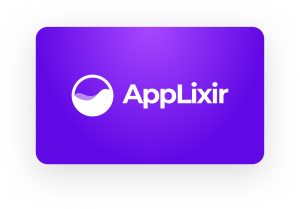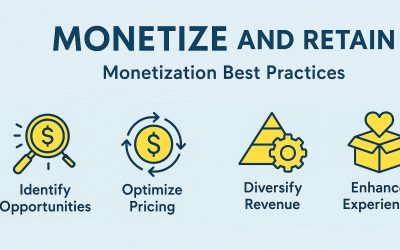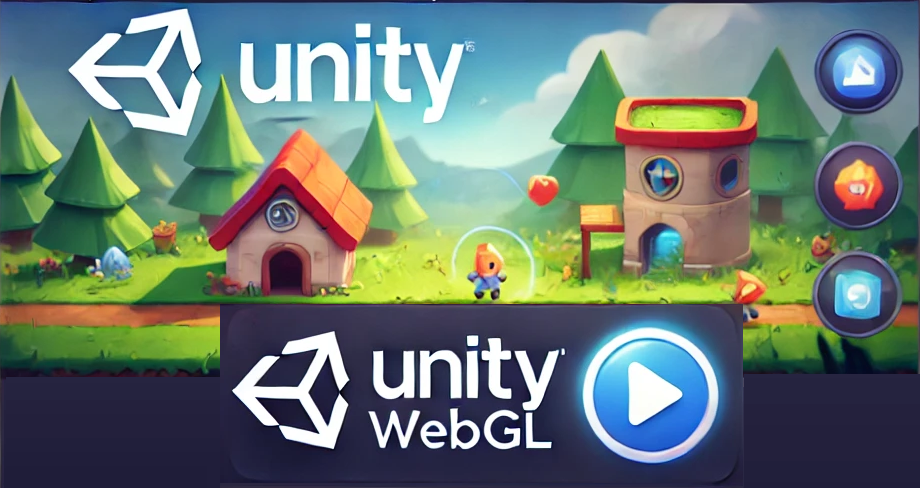Rewarded Video Monetization in 2025: What’s Getting in the Way?
Game monetization strategies have evolved from simple paid downloads to sophisticated hybrid models. Today’s successful games blend in-app purchases, subscriptions, and advertising into seamless experiences. Among these revenue streams, rewarded videos have emerged as a cornerstone of modern game monetization. These player-friendly opt-in ads generate substantial revenue while maintaining positive user experiences. The model is simple but powerful: players choose to watch a short video in exchange for in-game benefits like extra lives, currency, or power-ups.
As we move through 2025, rewarded videos continue to dominate the mobile ad landscape. The US market alone is projected to reach $7.3 billion in mobile ad spend. The metrics are impressive: completion rates regularly hit 80-90%. eCPM benchmarks on iOS frequently reach $10-20. For many game developers, rewarded videos account for up to 40% of total ad revenue. This makes them an indispensable component of the monetization mix.
However, success with rewarded videos isn’t automatic. Developers face an increasingly complex landscape of challenges. These can make or break their monetization strategies. Issues range from balancing player experience with revenue goals to navigating technical implementation hurdles. Privacy regulations add another layer of complexity. The path to rewarded video success requires careful planning, continuous testing, and a deep understanding of player psychology.
Contents
- 1 The Power of Player Choice: Why Opt-In Ads Work
- 2 Challenge #1: Walking the Tightrope of Ad Frequency
- 3 Challenge #2: Revenue Volatility in a Shifting Market
- 4 Challenge #3: Technical Implementation and User Experience
- 5 Challenge #4: Privacy Regulations and the Targeting Challenge
- 6 Challenge #5: The User Acquisition Puzzle
- 7 AppLixir: Best Practices for 2025 and Beyond
- 8 AppLixir Rewarded Video Ad
The Power of Player Choice: Why Opt-In Ads Work
Before diving into the challenges, it’s worth understanding why rewarded videos work so well. Unlike traditional interstitial or banner ads, they don’t interrupt gameplay uninvited. Opt-in ads put control in the player’s hands. This fundamental respect for player agency creates a positive value exchange. The player makes an informed decision. They invest 15-30 seconds of attention in return for tangible game benefits. This consensual relationship transforms advertising from an annoyance into a feature.
The voluntary nature also means higher engagement. Players who choose to watch are more likely to pay attention. This makes these ads more valuable to advertisers. The result? Higher eCPM rates that benefit developers.
Challenge #1: Walking the Tightrope of Ad Frequency
Perhaps the most delicate aspect of rewarded video implementation is determining ad frequency. How often should you present opportunities without overwhelming players? While these opt-in ads are voluntary by nature, frequency and timing of offers dramatically impact player perception.
Over-prompting remains a critical concern in 2025. Developers sometimes display multiple rewarded video opportunities per session. This is especially problematic during critical gameplay moments. Players can feel coerced rather than empowered. This “ad fatigue” manifests in several ways. Negative app store reviews increase. Session lengths decrease. Ultimately, players churn. The data is stark: mid-level interruptions in casual puzzle games can drop retention rates by 20-30%. A 2025 NetMarvel study found that excessive ad exposure cuts daily active users by 15%.
The challenge is particularly acute in hyper-casual titles. Session lengths are naturally short. Player retention rates are already low. In these games, every single interaction matters. There’s little room for missteps. Yet these same titles often rely most heavily on ad revenue. This creates difficult tension between short-term monetization and long-term player retention.
Successful developers approach this challenge through rigorous A/B testing. They also test when to present them. Post-level completion has emerged as a sweet spot. Players are in a natural pause state. They’re feeling accomplished. They’re often receptive to extending their session through an extra reward.
Limiting offers to 2-3 per session appears optimal for most game genres. This maintains novelty without triggering fatigue. Interestingly, hybrid monetization models help reduce pressure on ad frequency. These models blend rewarded videos with in-app purchases. When players have multiple paths to progression, developers can afford to be more selective about ad placement.
Industry data shows that 86% of developers report no negative impact on IAP revenue from well-implemented rewarded videos. Many actually see IAP increases. This happens as rewarded ads help players progress further and become more invested in the game.
Challenge #2: Revenue Volatility in a Shifting Market
While rewarded videos deliver strong performance on paper, developers face significant revenue unpredictability. Market dynamics, privacy regulations, and competitive pressures all drive this volatility. Understanding and managing this uncertainty has become essential for sustainable game monetization.
Ad rates fluctuate based on advertiser demand. This varies by season, economic conditions, and market saturation. In 2025, rewarded video eCPMs have shown contradictory trends. There’s growth in emerging hybrid-casual game categories. But saturated markets like North America show 5-10% year-over-year declines. The average now sits at $12-15.
Apple’s App Tracking Transparency framework continues to impact iOS revenue. Despite these limitations, Tenjin’s 2025 benchmarks show iOS rewarded ads still outperforming Android by 25%. Fill rate adds another layer of uncertainty. This is the percentage of ad requests actually filled with advertisements. During off-peak hours or in emerging geographic regions, fill rates can dip below 90%. This broken promise damages trust. It’s particularly problematic when developers have designed game economies around expected ad availability.
The solution lies in sophisticated ad mediation platforms and network diversification. Tools like Unity LevelPlay and AppLovin MAX enable waterfall optimization. Ad requests cascade through multiple networks until filled. Header bidding allows networks to compete in real-time for each impression. These technologies can boost fill rates by 10-15%. They maximize eCPM by ensuring the highest-paying ad wins each opportunity.
Platform choice matters significantly. Networks like AdMob, ironSource, and AppLovin dominate the landscape. However, developers increasingly turn to specialized solutions. AppLixir focuses specifically on rewarded video optimization. AppLixir has built its reputation on non-intrusive SDK implementation and strong fill rates. This makes it particularly attractive for developers who want reliable rewarded video performance without complex integrations.
Diversifying across networks provides insurance against any single platform’s fluctuations. But it requires careful management. Too many SDKs can bloat app size and create technical challenges. Too few creates dependency risk. Most successful developers maintain 3-5 core ad network relationships. One primary platform handles mediation and optimization.
 Challenge #3: Technical Implementation and User Experience
Challenge #3: Technical Implementation and User Experience
The technical execution of rewarded videos significantly impacts both revenue and player satisfaction. Implementation challenges persist even as SDKs mature. The gap between theory and practice can determine whether opt-in ads enhance or undermine game monetization efforts.
Load times represent the most visible technical issue. When players choose to watch a rewarded video, they expect immediate response. Delays exceeding two seconds trigger 10-20% abandonment rates. These are players who back out before the ad completes. They receive no reward. Developers earn no revenue. These failed interactions compound frustration. Players feel they’ve wasted time for nothing.
Multiple factors contribute to slow loads. Network latency plays a role. Ad creative file sizes matter. SDK efficiency is critical. Device performance varies widely. The challenge intensifies across the device fragmentation of Android. Developers must optimize for dozens of hardware configurations. These range from flagship phones to budget models with limited memory and processing power.
Cross-platform consistency between iOS and Android adds another complexity layer. 2025 brings experimental AR/VR ad formats that push technical boundaries even further. NetMarvel’s research indicates that intrusive loading experiences hurt user experience in 40% of cases. This manifests as app freezes, audio glitches, or visual artifacts that break immersion. These issues are particularly damaging in premium games. Production values and polish are core to the experience in these titles.
Solutions require both smart platform selection and thorough testing. AppLixir has gained traction specifically by addressing implementation pain points. Their SDK emphasizes lightweight integration and fast load times. Graceful failure handling prevents broken experiences. Their focus on rewarded video as a specialty allows for optimization that generalist platforms sometimes miss.
Beyond SDK choice, developers must implement defensive design patterns. Preload ads during natural downtime. Show clear loading indicators so players understand delays. Provide fallback rewards if ads fail to load. Implement dynamic segmentation to show ads only to engaged players likely to complete them.
Challenge #4: Privacy Regulations and the Targeting Challenge
The regulatory environment around data privacy has fundamentally reshaped digital advertising. Rewarded videos are no exception. While these opt-in ads are less dependent on targeting than some formats, privacy constraints still impact effectiveness and revenue.
GDPR in Europe, CCPA in California, and similar regulations worldwide limit data collection. They restrict how data can be used for ad targeting. Apple’s ATT framework requires explicit user permission for tracking across apps. Most users decline.
This creates “signal loss.” Advertisers have less information about who they’re reaching. Their ability to show relevant ads to high-value users decreases. In 2025, this signal loss translates to 15-20% reduced ad relevance for personalized campaigns. When advertisers can’t effectively target, they bid less aggressively. This drives down eCPMs. Developers in Europe report approximately 10% revenue hits from compliance requirements. Numbers vary significantly by game genre and audience composition.
The shift toward cookieless tracking and contextual advertising represents both challenge and opportunity. Rather than targeting individual users based on behavior across the web, contextual approaches focus on immediate context. This includes game genre, current gameplay state, and in-game demographics. A racing game might show automotive ads. A fantasy RPG might show movie trailers for fantasy films.
First-party data becomes increasingly valuable. This is information players provide directly to the developer. Email addresses, preferences from in-game surveys, and behavior within the app itself don’t require cross-app tracking. They can inform both game design and ad experiences without violating privacy regulations. Privacy-focused ad networks offer another path forward. These platforms use aggregated signals rather than individual tracking. They maintain ad effectiveness through cohort-based approaches. They show relevant ads to groups with similar characteristics rather than targeting individuals specifically.
Challenge #5: The User Acquisition Puzzle
While rewarded videos excel at monetizing existing players, they don’t directly drive user acquisition. This creates strategic tensions that developers must navigate. The economics of growing a mobile game have become increasingly challenging. Cost per install rates reach $2-5 for quality users in competitive categories.
Games relying heavily on ad monetization face a particular challenge. Ad-heavy experiences often receive lower organic ratings. It increases reliance on paid UA. This creates a vicious cycle. More revenue must be directed toward acquiring users who might churn if the ad experience isn’t perfectly balanced.
The player base composition adds complexity. Non-spenders represent 70-80% of most game audiences. They love rewarded videos. Free progression through opt-in ads is ideal for their play style. However, high-value spenders who drive IAP revenue may largely ignore rewarded videos. This creates uneven revenue distribution across the player base.
Udonis reports that 2025 ARPDAU is down 13% in games relying primarily on ads. This suggests that rewarded videos work best as part of a diversified strategy. They shouldn’t be a standalone approach. Successful developers tie rewarded video rewards to core progression systems. Both free and premium tracks progress through gameplay. Bonus progress for watching rewarded videos creates value for free players. It encourages premium purchases from those who want to advance faster.
Offerwalls provide another complementary approach. These are curated sets of rewarded actions including videos. They offer variety without overwhelming players with constant video opportunities. Retention-focused game design uses rewarded videos strategically. Place them at difficulty spikes. Use them to unlock new content modes. This turns ad experiences into genuine gameplay enhancements rather than interruptions.
AppLixir: Best Practices for 2025 and Beyond
Success with rewarded videos in today’s complex landscape requires treating them as a core game system. Don’t treat them as a revenue afterthought. The most successful implementations share several characteristics.
- Player-first design: Rewards are meaningful and well-integrated into game progression. Players feel they’re making a smart choice, not a desperate one.
- Continuous optimization: What works in Q1 may underperform by Q4. Regular A/B testing maintains effectiveness. Test placement, frequency, reward values, and presentation as player expectations evolve.
- Technical excellence: Ensure fast loads and reliable delivery. Whether through specialized platforms like AppLixir or careful in-house optimization, this protects both revenue and reputation.
- Hybrid monetization: Combine rewarded videos with IAPs, subscriptions, or other revenue streams. This reduces pressure on any single approach. It accommodates diverse player preferences.
- Transparency and respect: Clear communication about what players receive for watching builds trust. Honest reward delivery is essential. Never force ads. This maintains the trust that makes opt-in ads effective.
Games like Candy Crush demonstrate how rewarded videos can thrive long-term. They treat them as UX enhancers rather than cash grabs. Their implementation feels generous. Players appreciate the option without feeling manipulated.
AppLixir Rewarded Video Ad
Rewarded videos remain a powerful game monetization tool in 2025. But their effectiveness depends on navigating a complex web of challenges. These include player experience, technical execution, revenue volatility, privacy compliance, and user acquisition economics. Success requires sophisticated thinking. View opt-in ads as a player feature first. Consider them a revenue stream second.
Developers who invest in understanding their specific player base will find success. Choose implementation partners carefully. Test relentlessly. Maintain respect for player choice. Rewarded videos can be a sustainable foundation for free-to-play game economies. Those who view them simply as a quick revenue fix will likely struggle.
The future of rewarded video advertising lies in increasingly sophisticated personalization within privacy boundaries. Seamless technical integration is essential. Creative reward structures that deepen rather than interrupt engagement will define success. As passive monetization and new formats emerge, the core principle remains unchanged. Give players meaningful choices. Respect their time and attention. Deliver value on both sides of the exchange.
What challenges have you encountered in implementing rewarded videos? The landscape continues evolving rapidly. Shared learning among developers drives the entire industry forward.



